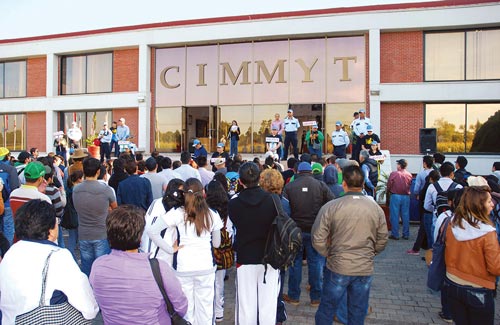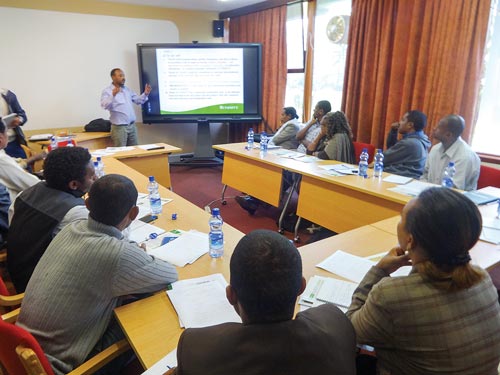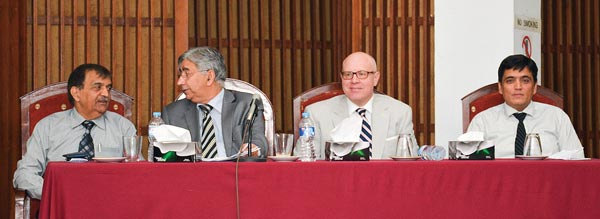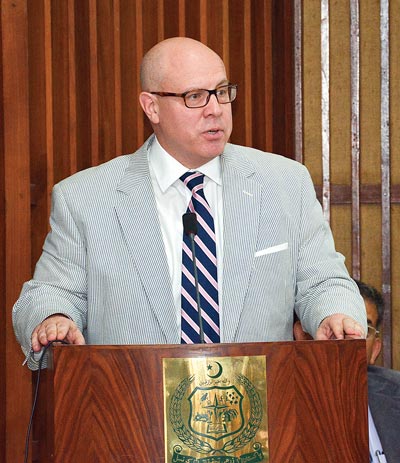Scale-appropriate mechanization: the intercontinental connection
CIMMYT aims to improve the livelihoods of poor farmers in the developing world by providing practical solutions for more efficient and sustainable farming. Among the options to improve efficiency, scale-appropriate and precise planting machinery is a crucial yet rarely satisfied need.
Mechanization efforts are ongoing across CIMMYT’s projects, with a strong focus on capacity building of functional small- and medium-scale engineering and manufacturing enterprises. Projects involved include ‘Farm Power and Conservation Agriculture for Sustainable Intensification’ in eastern and southern Africa, funded by the Australian Center for International AgriculturalResearch (ACIAR) and the Cereal Systems Initiative in South Asia (CSISA), funded by the Bill & Melinda Gates Foundation and USAID. CSISA collaborates closely with the machinery research and development work done on the farms of the Borlaug Institute for South Asia in India, CIMMYT conservation agriculture (CA) projects funded by the Australian Centre for International Agricultural Research, the Agri-Machinery Program based in Yinchuan, Ningxia, China, and the MasAgro Take It to the Farmer machinery and intelligent mechanization unit based in Mexico.
Applied research scientists and technicians assisting these projects work specifically to tackle problems in diverse farming conditions and for varying production systems. Despite their geographically diverse target areas, this team strives to reach a common focal point from which they can learn and compare technical advancements. These advancements are achieved through mutual machine technology testing programs, exchanging machines and expertise and evaluations of best solutions for scale-appropriate mechanization to boost sustainable intensification for resource poor farmers.
Recently, this collaboration model led to the export of several units of a toolbar-based, two-wheel tractor implement for bed shaping, direct seeding of different crops and precise fertilizer application. They will be tested by CIMMYT projects in Bangladesh, Ethiopia and Nepal. This multi-purpose, multi-crop equipment was developed to be CA-compatible and has been fine-tuned in Mexico, with design priorities that kept in mind the implement’s usefulness for smallholder farmers in other parts of the world. The machinery will be tested next in Zimbabwe and possibly India and Pakistan.
The team’s goal is to help developing countries and viable business models of local enterprises in specific regions to have access to good quality implements and tools at reasonable prices. This open-source prototyping strategy is based on the free sharing of technical designs and machinery construction plans. The strategy combines patent-free, lowcost replication blueprints of promising technologies with strong agronomical testing as the ultimate ‘make or break’ criterion. This crucial interaction sets CIMMYT’s engineering platforms apart from commercial options that determine research and development priorities based mainly on sales projections and marketing objectives.
The mechanization team strongly believes in the power of cross regional collaboration – a multidisciplinary work environment, connected intercontinentally with social stewardship and the potential to bring transformative changes to farmers’ fields across the developing world.
 On 15 October, Dr. Bram Govaerts, Associate Director of the Global Conservation Agriculture Program of the International Maize and Wheat Improvement Center (CIMMYT), received the 2014 Norman Borlaug Award for Field Research and Application Endowed by the Rockefeller Foundation during the World Food Prize Borlaug Dialogue International Symposium in Des Moines, Iowa.
On 15 October, Dr. Bram Govaerts, Associate Director of the Global Conservation Agriculture Program of the International Maize and Wheat Improvement Center (CIMMYT), received the 2014 Norman Borlaug Award for Field Research and Application Endowed by the Rockefeller Foundation during the World Food Prize Borlaug Dialogue International Symposium in Des Moines, Iowa.





